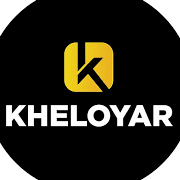The Europe chemical anchors market size was estimated at USD 321.9 million in 2023 and is projected to reach USD 411.4 million by 2030, growing at a compound annual growth rate (CAGR) of 3.1% from 2024 to 2030. The market’s growth is primarily driven by the steady expansion of the European construction industry, which continues to benefit from rising government investments in infrastructure, residential, and commercial projects across key economies such as France, Spain, the U.K., and Poland. Increasing construction spending is largely fueled by rapid urbanization, population growth, and ongoing industrial development in the region. Additionally, advancements in epoxy resin technology have significantly contributed to the enhanced performance of chemical anchors. Modern epoxy formulations now offer improved functionality, extended shelf life, and superior corrosion resistance, comparable to that of two-component epoxy polyamide coatings. Epoxy remains a vital ingredient in chemical anchoring systems, enhancing their durability, bonding strength, and overall reliability in demanding construction environments.
Germany is projected to experience a positive trajectory in the construction sector over the coming years, supported by major infrastructure and industrial developments. In 2023, the country witnessed several high-value projects, including Rock Tech’s lithium plant in Brandenburg, the Stuttgart 21 railway redevelopment project, the Digital Park Fechenheim Project, and the Frankfurt Airport Terminal 3 construction project, each valued between USD 230.0 million and USD 500.0 million. These large-scale initiatives are expected to generate substantial demand for chemical anchors, as they play an essential role in securing structural elements, machinery, and heavy components. Such investments underscore Germany’s strong industrial base and commitment to infrastructure modernization, both of which are likely to reinforce the demand for reliable anchoring solutions throughout the forecast period.
The market is also benefiting from the increasing adoption of lightweight construction materials, growing awareness about energy-efficient building practices, and the preference for environmentally sustainable construction methods. Chemical anchors are extensively used across various sectors including residential, commercial, industrial, and infrastructure to fix structural components securely to both solid and hollow substrates such as concrete, stone, brick, and porous concrete. Their versatility, high load-bearing capacity, and ease of application make them an essential component in modern construction techniques, particularly in projects requiring long-term stability and structural integrity.
Key Market Trends & Insights:
- Germany dominated the Europe chemical anchors market in 2023, accounting for a revenue share of USD 76.3 million. The country’s leadership position can be attributed to its strong construction activities and continued infrastructure investments. Meanwhile, Poland is expected to register the fastest growth in the region, with a projected CAGR of 4.9% over the forecast period, driven by expanding infrastructure development and increasing foreign investments in industrial construction.
- Based on product type, the injectable adhesive anchors segment led the market with a 74.6% revenue share in 2023. These anchors are preferred due to their superior bonding strength, ease of installation, and adaptability to a wide range of base materials. On the other hand, the capsule chemical anchors segment is expected to grow at a CAGR of 4.2% through 2030, owing to their convenience, consistent performance, and suitability for high-stress applications.
- By resin type, epoxy acrylate was the most widely used resin in 2023, generating revenues exceeding USD 115.5 million. This dominance is attributed to epoxy acrylate’s excellent adhesion properties, high chemical resistance, and fast-curing nature, which make it ideal for demanding construction and repair applications.
- In terms of application, the infrastructure segment held the largest market share in 2023 and is expected to grow steadily at a CAGR of 3.5% during the forecast period. The growing number of public infrastructure projects, such as bridges, tunnels, and transport networks, along with urban renewal initiatives across Europe, continues to support demand for chemical anchors in this segment.
Order a free sample PDF of the Europe Chemical Anchors Market Intelligence Study, published by Grand View Research.
Key Companies & Market Share Insights:
The Europe chemical anchors market is moderately consolidated, with leading players including Sika AG, Hilti Corporation, Simpson Strong-Tie Company, Inc., Henkel AG & Co. KGaA, fischer Group of Companies, and Illinois Tool Works Inc. These companies are actively pursuing strategies such as product innovation, mergers and acquisitions, and investments in research and development to strengthen their market positions and cater to evolving construction needs.
For instance, in July 2023, Simpson Strong-Tie Company, Inc. introduced the AT-3G, an all-weather hybrid-acrylic anchoring adhesive designed for high-strength bonding and rapid curing in both uncracked and cracked concrete. This innovative product launch aims to attract a broader customer base by offering enhanced performance under various environmental conditions. Such developments reflect the ongoing trend of innovation and technological advancement within the industry, as manufacturers continue to expand their portfolios to address the growing demand for efficient, durable, and sustainable anchoring solutions.
Explore Horizon Databook – The world's most expansive market intelligence platform developed by Grand View Research.
Conclusion:
In conclusion, the Europe chemical anchors market is expected to witness consistent growth, supported by the rising pace of construction activities and continuous infrastructure investment across the region. The adoption of advanced resin technologies and environmentally friendly construction materials is further boosting product performance and reliability. Countries like Germany and Poland are anticipated to remain key growth drivers due to their robust construction sectors and government-backed projects. Additionally, product innovations by major players, such as the introduction of hybrid and high-performance adhesives, are likely to enhance market competitiveness. Overall, the market outlook remains positive, reflecting Europe’s steady transition toward modern, efficient, and sustainable construction practices.






